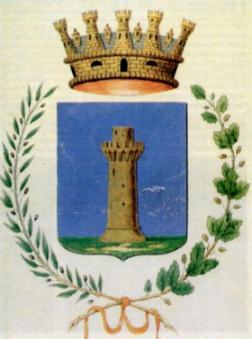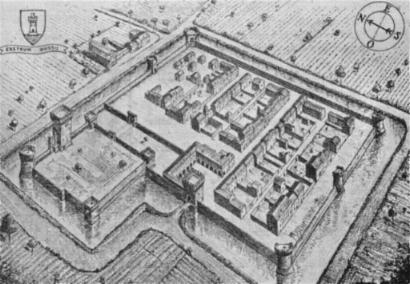 RUSSI
(Ravenna)
RUSSI
(Ravenna) RUSSI
(Ravenna)
RUSSI
(Ravenna)The area shows of significant development in the agricoltural sector and of a large country house. However, as the fascinating fog begins to clear, the badly developed water supply system and the history of a disputed territory begin to emerge.
The area around the "castrum" of Russi has been disputed between
the people from Faenza ed the people from Ravenna ever since the beginning
of the middle age.
The people from Ravenna built the castles of Raffanare and Cortina
in this area in order to defend themselves from attack on the part of Faenza.
In 1234, when fights between the two "cities" were very frequent, the people from Faenza destroyed the two castels leaving Ravenna defenceless. Later on, the territory saw the construction of a castle with fortifications. Russi owes ist foundation (1371) to Guido da Polenta, the sixth "signore", that is the owner of the territory, of Ravenna, who lived in the castle until 1377.

The area at the time "had seventy fireplaces", and the population living in the surrounding area was allowed to live within the fortifications: a new community was bors. In the following centuries, the castrum of Russi saw the alternation of the Polenta family from Ravenna and the Manfredi from Faenza.
During the first three decades of the 16th century, the castle was attacked by troops of the Borgia clan, then by soldiers of the League of Cambrai, then by Gastone de Foix (3-4 april 1512). In 1527, the situation worsened as the troops of Charles of Bourbon heading for Rome invaded the castel, sacked the city and killed a lagre number of people.
In 1568, Faenza obtained the territory of Russi once again, although the town had its own court and administrative institutions. Then, Russi became a possession of the Pontifical State until 1859, when the Legazione di Ravenna and Russi itself became indipendent once again. Until the beginning of the 18th century, Russi was a small village where life was hard. However, living in the surrounding country areas was even harder, and foreigners were locked upon with suspicion. the high rate of illiteracy hindered information and trade with the surrounding towns. The population mainly lived in the wooden houses backed by wreckage bricks, while houses in the coutryside were mainly built by using wickerwork trellises and mortar and they were backed by beams.
The 18th century was characterised by deep changes in the social
structure of the town. Farmers - who were helped by the religious men of
the town and belonged to the signore - were now flanked by new social groups,
such as craftsmen, traders and new landowners - who owned smaller pieces
of land than their predecessor.
In this period, new important families such as the Farini and the
Baccarini in the social and political sectors and the Babini and others
in the economic and industrial sectors played a key role in the development
of the town and the nation and also had a grat importance in the international
scene.
Moreover, Russi was hotbed of the Italian risorgimento under the
signore Domenico Antonio Farini. In 1831, Russi was the first village in
Romagna to rise in ribellion and 31st december 1834 Farini was shot to
death during an ambush. From 1831 to 1870, 367 people from Russi took part
in popular insurrections for the Italian indipendence.
The moral and political inheritance of Domenico Antonio Farini was
taken up by his nephew, Luigi Carlo Farini, who became dictator of Emilia
and Prime Minister.
Other important figures from Russi were minister Alfredo Baccarini and Domenico Farini - Luigi Carlo Farini's son - who became President of both the Upper and Lower Chambers. After the unification on Italy, the town's local authority was formed by lay members. This had a strong influence on the town's economy, wich underwent deep changes. Agriculture was now flanked by industrial and trade activities.
In 1878, Russi became a "Città" (City) thanks to a royal decree.
Other important figures from Russi are Silvio Gordini, painter, teacher
and director for a period of 34 years of the Accademia di Belle Arti of
Bologna, Arnaldo Foschini, architect and president of the Accademia di
San Luca, and Delio Cantimori, historian and senior member of the Accademia
dei Lincei.